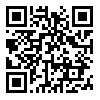Volume 9, Issue 4 (3-2023)
jhbmi 2023, 9(4): 256-266 |
Back to browse issues page
Download citation:
BibTeX | RIS | EndNote | Medlars | ProCite | Reference Manager | RefWorks
Send citation to:



BibTeX | RIS | EndNote | Medlars | ProCite | Reference Manager | RefWorks
Send citation to:
Salehnia N, Salehnia F. Identifying the Challenges of Users in Using the Services of Electronic Health Platforms. jhbmi 2023; 9 (4) :256-266
URL: http://jhbmi.ir/article-1-737-en.html
URL: http://jhbmi.ir/article-1-737-en.html
P.h.D of Health Economics, Cyberspace Ethical Studies Group, Cyberspace Research Institute, Tehran, Iran
Abstract: (3177 Views)
Introduction: In recent years, especially with the spread of the COVID-19 disease, the use of electronic health services has increased greatly. Along with the growth and development of the use of electronic services among users, the concern about ethical and legal issues increases. The purpose of this article was to review the current state of electronic health provision by active platforms in this field and to identify the challenges and problems of users in using these services to achieve the desired state.
Method: This qualitative study was conducted using the content analysis method. User comments were collected in Bazaar and Myket mobile applications. Then, using the purposeful sampling method, 300 selected comments containing users' difficulties were analyzed by qualitative content analysis method based on the six steps proposed by Graneheim & Lundman using MAXQDA software.
Results: The most important problems reported by users of e-health services fall into two main categories: issues related to care and issues related to the service provider's platform; these difficulties are classified into six subcategories, including doctor-patient relationships, the standard of care, platform quality, user feedback, responsibility, and service tariff. Among the user comments, the most dissatisfaction was associated with the subcategory of the platform's responsibility and accountability (especially the issue of not receiving services despite paying, poor support, and no refunds), followed by issues related to the standard of care.
Conclusion: The results of the present analysis can help policymakers with appropriate legislation and regulation and help business managers with solving identified problems. It also increases user satisfaction and trust.
Method: This qualitative study was conducted using the content analysis method. User comments were collected in Bazaar and Myket mobile applications. Then, using the purposeful sampling method, 300 selected comments containing users' difficulties were analyzed by qualitative content analysis method based on the six steps proposed by Graneheim & Lundman using MAXQDA software.
Results: The most important problems reported by users of e-health services fall into two main categories: issues related to care and issues related to the service provider's platform; these difficulties are classified into six subcategories, including doctor-patient relationships, the standard of care, platform quality, user feedback, responsibility, and service tariff. Among the user comments, the most dissatisfaction was associated with the subcategory of the platform's responsibility and accountability (especially the issue of not receiving services despite paying, poor support, and no refunds), followed by issues related to the standard of care.
Conclusion: The results of the present analysis can help policymakers with appropriate legislation and regulation and help business managers with solving identified problems. It also increases user satisfaction and trust.
Audio file [MP3 2285 KB] (119 Download)
Send email to the article author
| Rights and permissions | |
 |
This work is licensed under a Creative Commons Attribution-NonCommercial 4.0 International License. |






